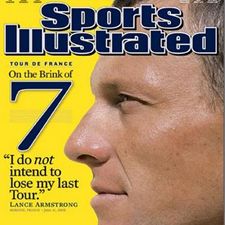Lance’s impact on the bike industry is as controversial as his alleged drug use. With all the recent chatter and analysis, let’s correct some of the revisionist history being spun.
I read recently another Lance defender talking about the huge positive impact Lance’s Tour successes have had on the industry.
The facts are simple: Between 1999 and 2009, call it The Lance Decade, unit sales, dollar sales and participation in the U.S. bicycle market all declined.
Unit sales: Sales of adult bicycles declined from 11.6 million units in 1999 to 10.2 million in 2009.
Participation: Declined from 42.4 million to 39.3 million in the same period.
Overall industry sales, much harder to track, are generally agreed to be flat, which means down when adjusted for inflation.
Of course, there was the psychological boost we all felt as one of the world’s two most revered athletes was a cyclist. The other? Tiger Woods.
By the way, golf participation declined from 1999 to 2009, The Tiger Decade. From 12.6 million to 12.0 million.
Teasing out the Lance Effect on sales from the myriad other factors involved is difficult. No doubt Dick Moran’s late-Nineties decision to put the Postal team on Treks was good for Trek.
I would humbly posit that people who care about the Tour de France don’t often choose their next bicycle based on who’s dominating the race.
Those who DON’T care about the Tour, who think of Lance as a cancer fighter, are more likely to have their bike choice influenced by Lance than the tifosi are.
At any rate, it’s safe to conclude that while brand share may be impacted by Lance’s success, the overall health of the industry isn’t.
So this resurrects what is now known as the Townley vs. Sinyard debate: Is spending marketing dollars on supporting top-level race teams a good investment?
Mike’s impassioned, F-bomb-laced defense of his company’s commitment to racing at the 2010 BLC is now the stuff of legend.
And let’s say, for the sake of argument, that Trek got its money’s-worth by investing in Lance during the heart of his career.
They’re doubly fortunate that, with Lance’s reputation now tarnished if not yet ruined, everyone (outside the industry) has forgotten what kind of bike he rode.
What about all the dollars spent to support the teams that were losing to Lance and Company?
As long as those dollars are being spent by former bike racers, Marketing Directors who have come up through the ranks, the ROI will take a back seat to Sinyard-style passion.
And unless our industry manages to attract and hang onto classically-trained marketing types, who can take a hard look at that ROI, we’ll never really know if supporting racing makes sense in dollars-and-cents terms.
It’s safe to say, though, that if the Lance Empire comes crashing down, Tour titles stripped, etc. (and how can it not at this point?), that outside-the-industry corporate sponsorship will become even harder to come by.
Bikes are still and forever cool. Marketers will continue to put a bike in the background of movie sets to show that the actor who rides it is hip and fit.
Bike racing is a completely different animal. Whether those same marketers will spend money to support a sport badly in need of rehab is another question entirely.


